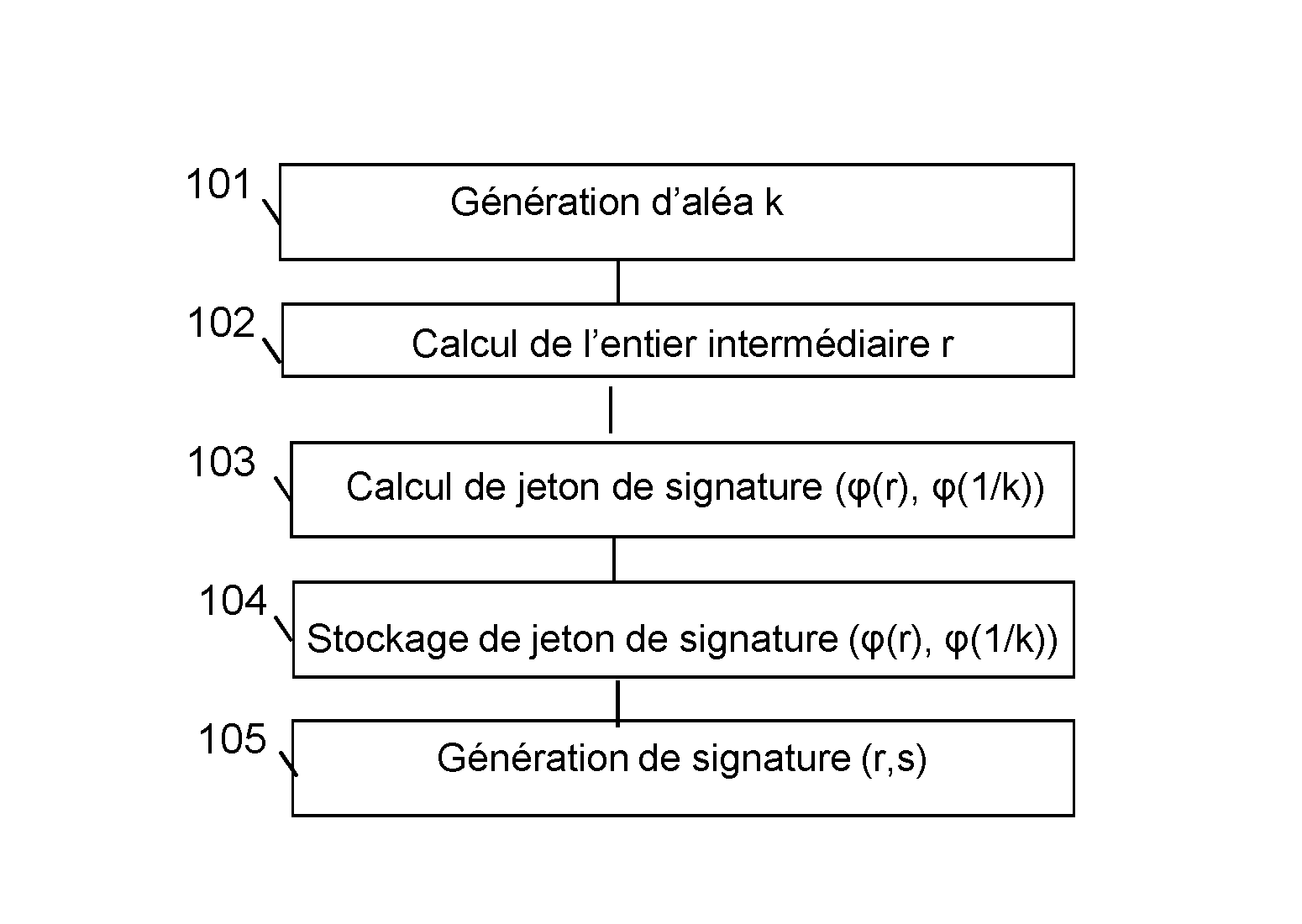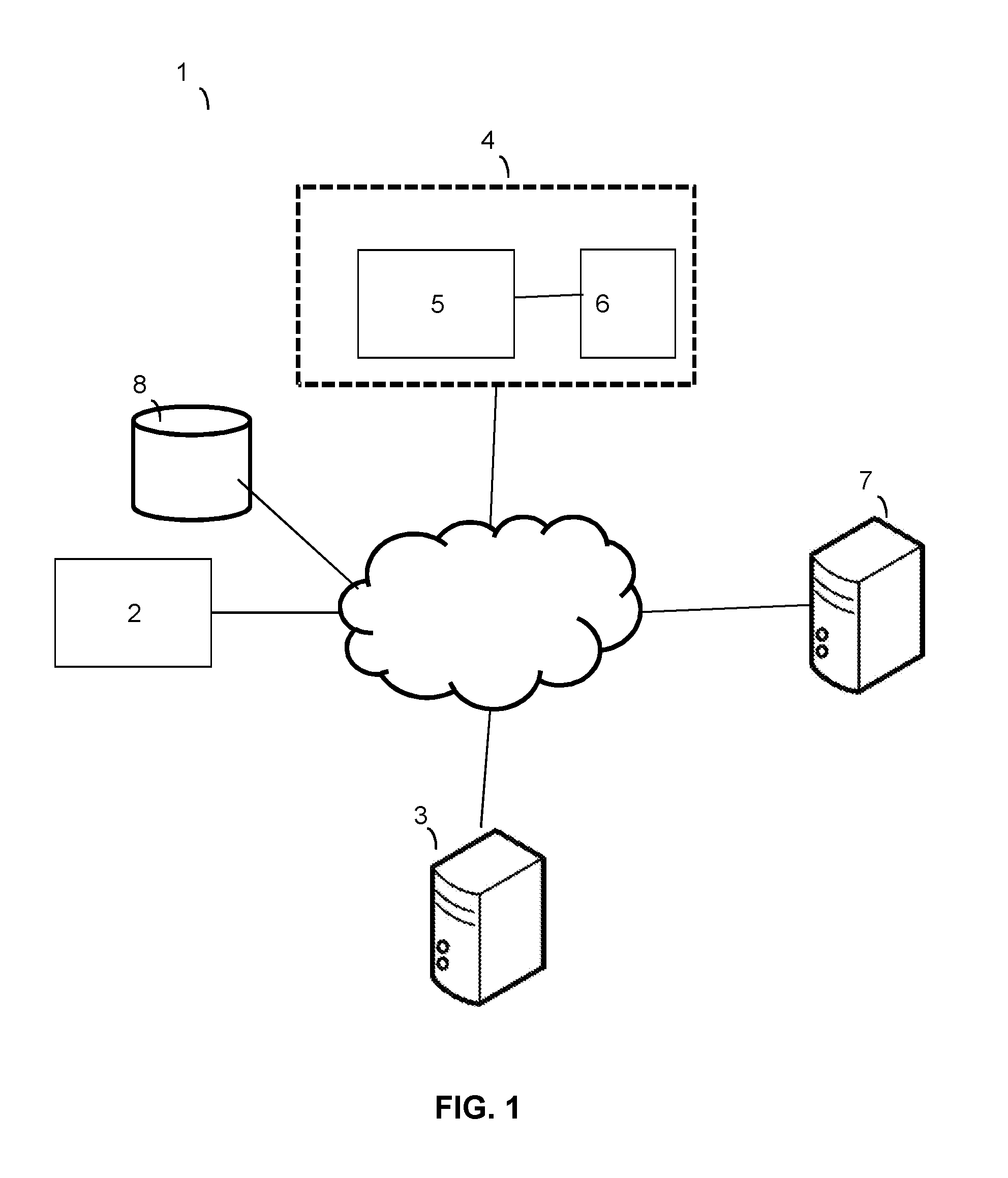Method for generating a message signature from a signature token encrypted by means of a homomorphic encryption function
a technology of homomorphic encryption and message signature, applied in the field of generation of message signatures, can solve the problems of inability to predict computation, inability to generate signatures, and high computational cost, and achieve the effect of reducing the cost of generating signatures
- Summary
- Abstract
- Description
- Claims
- Application Information
AI Technical Summary
Benefits of technology
Problems solved by technology
Method used
Image
Examples
first embodiment
[0083]In a first embodiment, this signature token can comprise a first part of signature token. Such a first part of signature token noted φ(r) can be generated by encrypting the computed intermediate integer (r) by means of said homomorphic encryption function φ. It can also comprise a second part of signature token φ(1 / k) generated by encrypting the inverse of the random 1 / k by means of said homomorphic encryption function φ.
[0084]In this embodiment, the signature of the message m encrypted by means of said homomorphic encryption function can comprise a first part of signature encrypted by means of said homomorphic encryption function and generated by means of the formula: φ(s)=φ((1 / k)*(z+d.r)) and a second part of signature encrypted by means of said homomorphic encryption function equal to φ(r) with 1 / k the inverse of the random, z function of the message m, d the private key stored by the client device, r the computed intermediate integer and φ the homomorphic encryption functi...
second embodiment
[0086]In a second embodiment, the signature token further comprises the result φ(r.1 / k) of the encryption by said homomorphic encryption function of the product of the computed intermediate integer with the inverse of the random 1 / k. During the step for generating signature 105 the first part of encrypted signature φ(s) can therefore be generated by means of the formula:
φ(s)=φ((1 / k).z+d.(r.1 / k))
The only homomorphic operations on the multiplication to be computed are computation of φ((1 / k).z) from φ(1 / k) and φ(z) and computation of φ(d.(r.1 / k)) from φ(d) and φ(r.1 / k). The computation of the signature therefore needs homomorphic multiplications of the order 1 only and is lighter than in the preceding embodiment wherein it is necessary to compute a first multiplication of the order 1, for example φ(d.r) from φ(d) andφ(r), then multiplication of second order, for example φ(1 / k.d.r) from φ(1 / k) and of the result of the computation of φ(d.r).
[0087]In the two embodiments, the signature is ...
PUM
 Login to View More
Login to View More Abstract
Description
Claims
Application Information
 Login to View More
Login to View More - R&D
- Intellectual Property
- Life Sciences
- Materials
- Tech Scout
- Unparalleled Data Quality
- Higher Quality Content
- 60% Fewer Hallucinations
Browse by: Latest US Patents, China's latest patents, Technical Efficacy Thesaurus, Application Domain, Technology Topic, Popular Technical Reports.
© 2025 PatSnap. All rights reserved.Legal|Privacy policy|Modern Slavery Act Transparency Statement|Sitemap|About US| Contact US: help@patsnap.com



